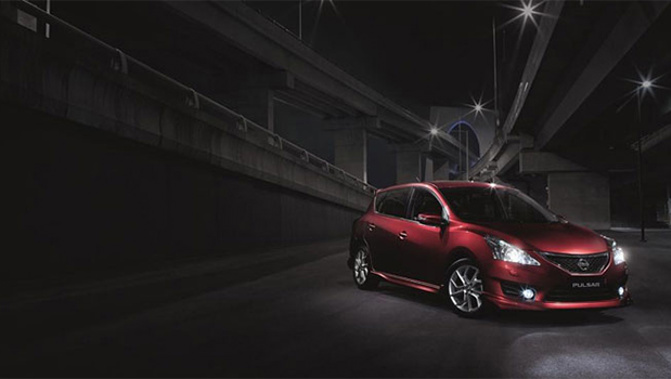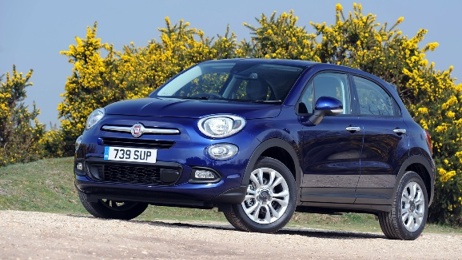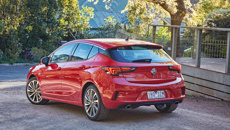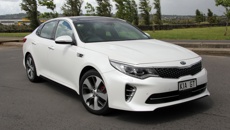
Being a good car isn’t going to be good enough these days, for any new model hoping to make a serious sales impact in our tough and combative small car class.
The reason is simple – the competition is nothing short of ferocious with the market bristling with so many talented cars, including the Volkswagen Golf and Ford Focus. This is where is where good newcomers and even old nameplates that are good and on the comeback trail such as the Nissan Pulsar, are going to struggle. The new Pulsar was launched here in sedan form in March and was joined six months later by a five-door hatch version. While infinitely superior to it predecessor the drab Tiida, it isn’t the quantum leap forward in small car design and engineering needed to pose a serious threat to the front runners in this market.
While the sedan is a two-model affair, the hatch comes as a threesome. Leading the way is the entry-level ST hatch that shares the same $29,995 price tag and 1.8 litre motor as the sedan. The next two rungs up the model ladder are the ST-S costing $34,990 and anchored at the top of the range is the $39,990 flagship SSS 1.6 turbo, which returns to our shores after a lengthy break.
Both models are very much the excitement machines in the Pulsar catalogue with a lusty 1.6 litre 140kw turbo charged engine that signals a bit of a return to hot hatch form for Nissan. As hot hatches go, this one isn’t a genuine sizzler, but still warm enough performer to keep most owners more than happy. With an extra 48KW of grunt over the standard 1.8 litre model I test drove around the same time, it easily takes the gong for the quickest small Nissan hatch ever sold here.
Like it did in the Pulsar sedan I road tested a few months ago, Nissan's long-stroke and long serving 96kw 1,798cc four-cylinder proved a solid and consistent performer in the hatchback. I noticed during an extended open road driving where there is a fair amount of undulating terrain; the engines lacked genuine low-speed pulling power. This is a motor is born to be revved and it has to be to extract its maximum torque that arrives at a rather frenetic 4,800rpm. Nissan claim around 80 per cent of the engine's torque is available from about 2,400 rpm. In the test car it felt like a lot less. At higher revs, this isn’t the sweetest sounding motor but still more refined that its predecessor the Tiida. Overall the engine is probably slightly noisier than the small car norm and is an area Nissan should be targeting for improvement.
As you would expect there is an enormous performance gulf between the standard normally aspirated 1.8 litre engine and the fiery turbocharged 1.6l motor used in the ST-S and SSS, which by comparison, goes like veritable cannon ball. It powers away strongly from standing starts and delivers equally bullish in-gear acceleration. It’s deceptively rapid, to the point where keeping an eye on the speedo is essential. On open road trips the easiest way to keep on the right side of the speed limit was to lock-in the easy-to-use cruise control system. This little blockbuster of an engine is I about to be served up here very shortly in the trendy, but quirky looking Juke urban SUV. This model is selling up a storm in the UK. However, more conservative Kiwi new car buyers are less enthused about one of the more radical offerings from Nissan in recent times. Turbo charging could prove just the tonic for powering the Juke out of the sales doldrums.
Consistent with most CVT transmissions I have experienced, this one when hitched to both the 1.8 and 1.6 turbo motors, droned away a bit longer and louder than it should at open road speeds. It certainly skims a bit of zip out of the non-turbo engine. Know such issues with the 1.6 litre has that so much torque that peaks at an almost diesel engine like 1600rpm, it easily breaks the performance shackles that CVT gearbox often imposes on engines. In the spirit of a true hot hatch, it’s a little hard to fathom why a manual transmission option isn’t available, as it is in some markets. Instead, the SSS for our market is lumbered with a gearbox normally found in the sort of small cars grandmas use to go to the supermarket or bowling club.
Pulsar hatch owners enjoy the same the expansive passenger compartment as the four-door sedan. There is also a higher quality look and feel to the interior thanks to greater use of good quality fixtures and fittings. Both hatches earn large safety ticks against their names for their exhaustive inventory of safety kit. Heading that list are four-wheel disc brakes with ABS, Electronic Brake Distribution and Brake Assist, Traction Control and Vehicle Dynamic Control, front, side and curtain airbags and three-point seat belts for all occupants.
The handling is assured and confident especially in the SSS, that offers exceptional reserves of grip when the handling heat is turned up. As well weighted as the rack and pinion power steering is in both hatches, it simply lacks enough road feel to really engage the driver. I found this particularly disappointing in the SSS, a car that has a great opportunity to put Nissan back on the small performance hatch map in this country. Open road comfort levels in both test vehicles, proved surprisingly good helped to some extent by a fairly long wheelbase and longish stroke suspension.
The verdict
A welcome return of the Pulsar name to the Nissan stable in this country with the SSS adding a bit of performance zip to the model mix, although it isn’t the most refined or best handling “Go-faster” hatch, its still a good drive.
Reviewed by Bob Nettleton
Take your Radio, Podcasts and Music with you









